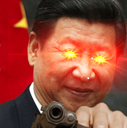This is a concise answer I found online, but it only confuses me more.
“Because profit can only come from human labour, as more and more capitalists invest in the new machinery the average labour time required to produce each commodity falls. This is what makes the rate of profit fall, as the ratio of surplus value to investment falls across the whole system.”
My understanding of this paragraph is that as machines play more and more a role in production less human labor is needed to produce the commodity, but I dont get how that lowers profit. My first thought it, don’t machines allow more money to be made? As capitalism develops we are reaching a point where 90%+ jobs in some industries will be replaced by machines, needing less people and less overall investment for the profits you’re getting. The entire reason is that it makes more profits right? Employers at least in the US save a ton just from not needing to pay for employees healthcare and other benefits, there are a lot of incentives in replacing people with machines.
I am sure these questions sound totally moronic to you comrades who have read capital volume three, but I hope you can see where I’m coming from and let me know what I’m getting wrong. I would really like to understand this, but it’s pretty intimidating to get into and wrap my head around some of this stuff. Thanks guys.


Is surplus value the same as profit? My understanding is surplus value is the value extracted from workers, while profit is just the money the business made past the costs.
Is the falling rate of profit a cycle of sorts that leads to crisis? Like profits boom with the invention of the cotton gin for example but then fall over time as profit stabilizes with reduced price, but then when there is another major breakthrough like the internet profits boom again? Sorry for the basic boring questions comrade!
You are correct on surplus value and profit. The TRPF is a long term historic trend (with countervailing effects) not a cycle.